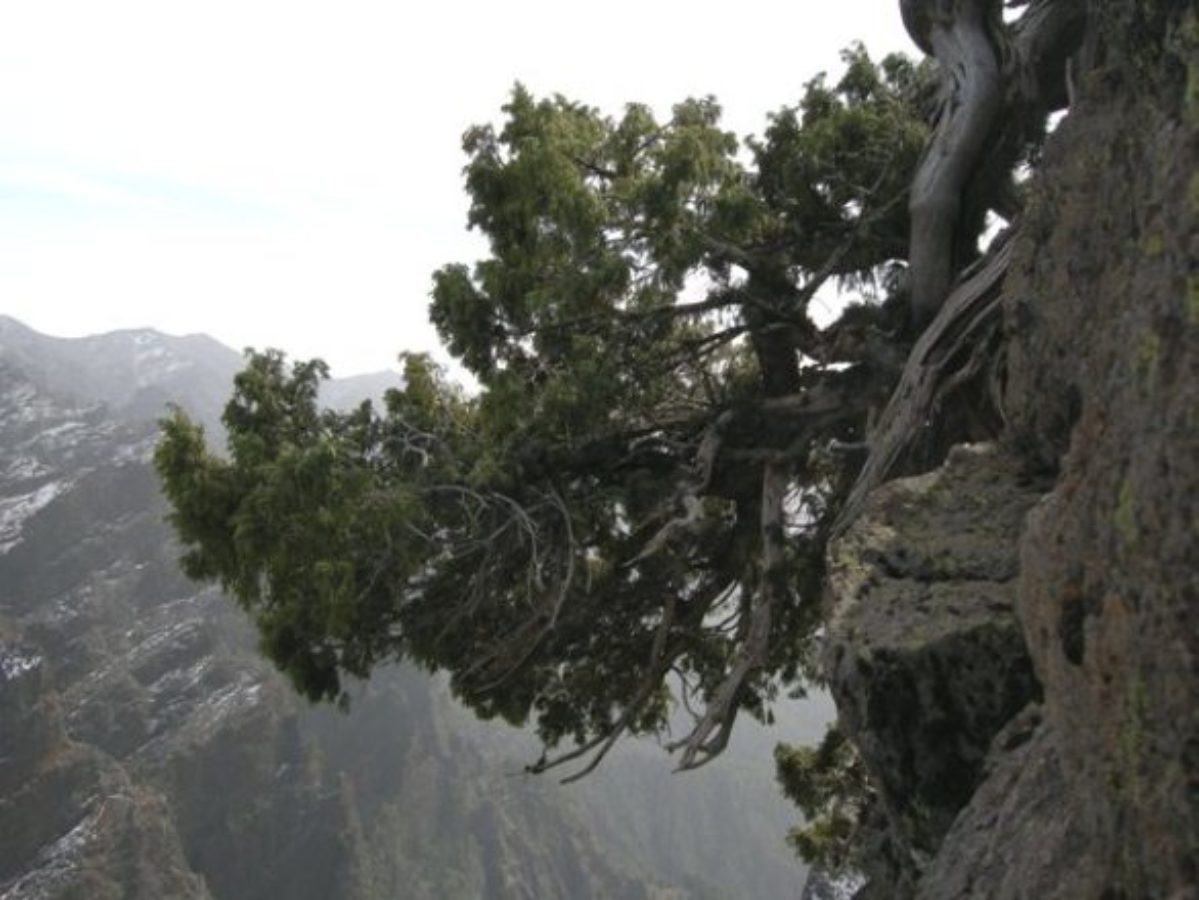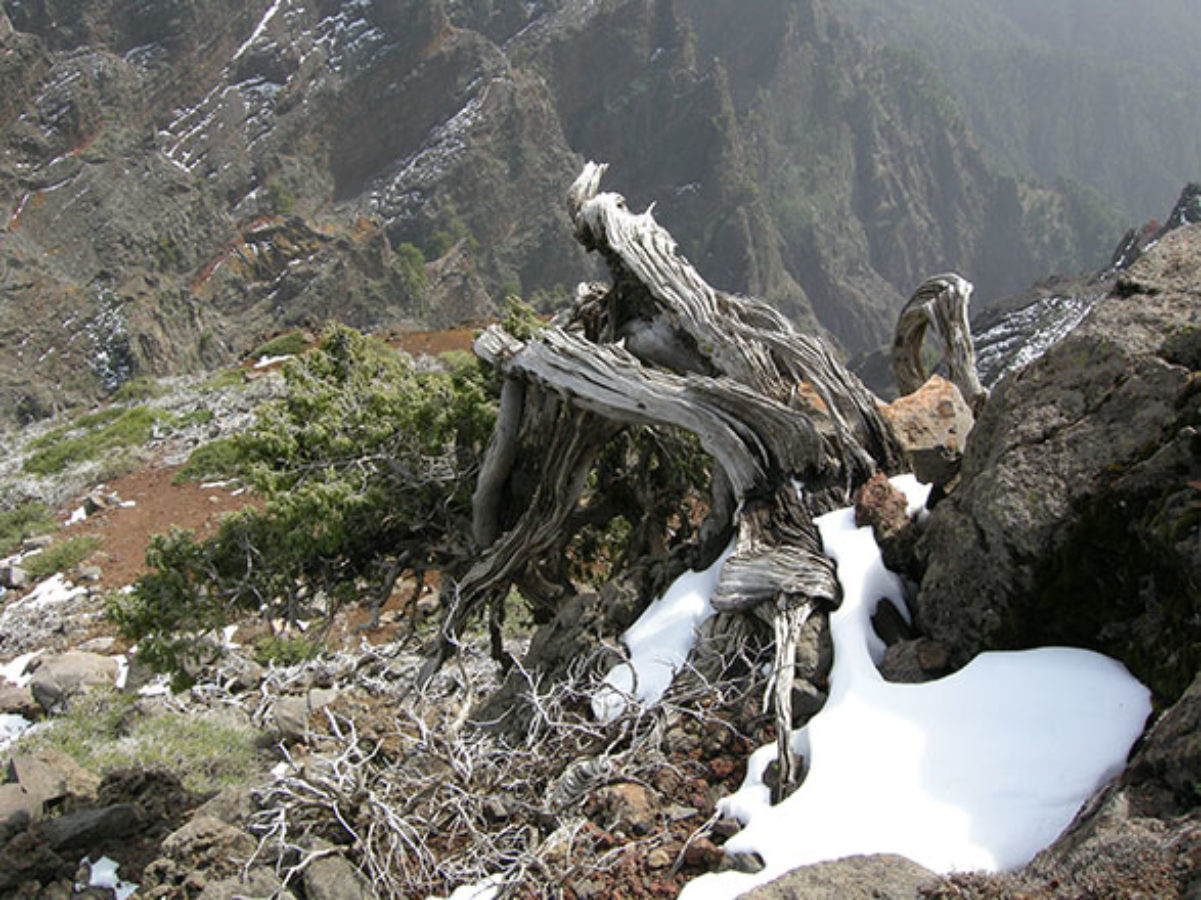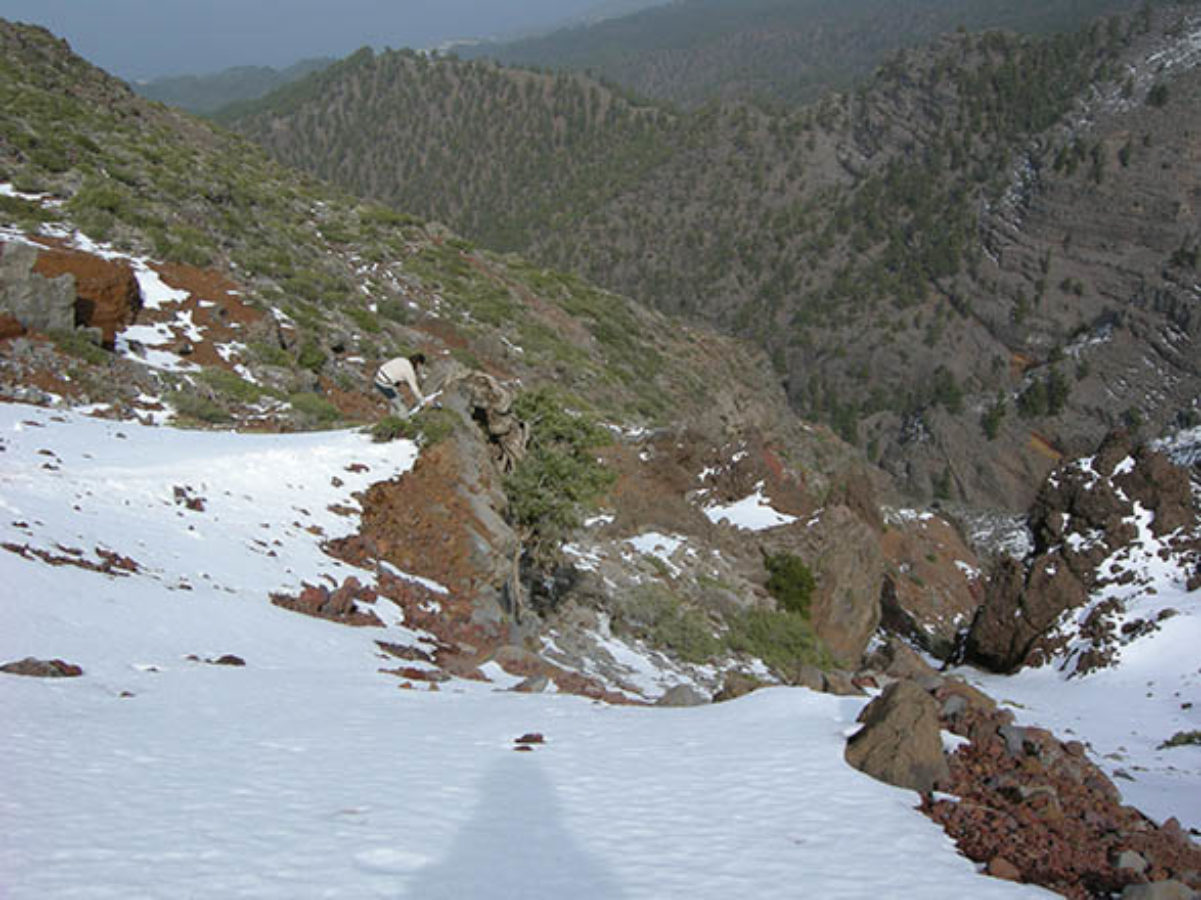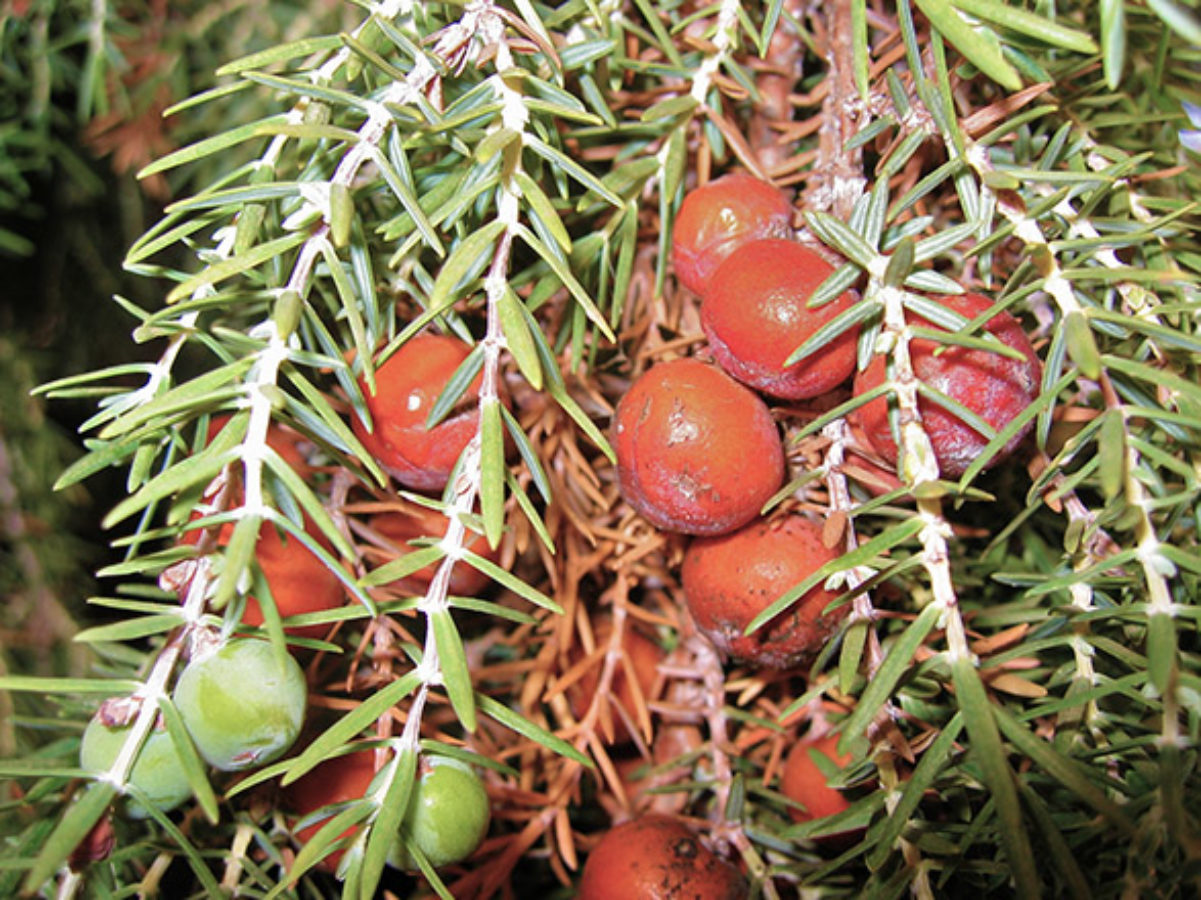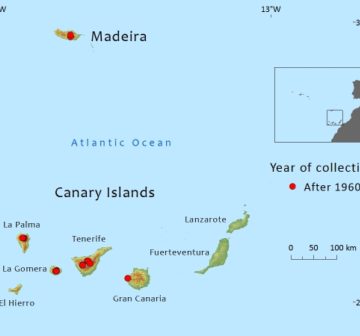Cupressaceae
Juniperus cedrus
Endemic to the Canary Islands and Madeira, where it often occurs at high altitude clinging on to exposed rock outcrops. Threats include grazing and fire.
Description
Habit
Mostly occurs as dioecious shrub, often at high altitudes, rarely seen as a tree to 20m tall. Branches spreading or ascending, crown broad and irregular, young trees more pyramidal. Bark orange-brown, exfoliating in long stringy strips.
Foliage
Often sparse with characteristically spreading, pendulous branchlets. Leaves borne in alternating whorls of usually 3.8–20mm long, 1.2mm wide, rigid and boat-shaped, straight with entire margins and pungent at apex, stomata in two conspicuously white bands occurring either side of the midrib on the upper surface.
Cones
Female cones 8–12mm, globose, borne in the axil of the leaves and orange-brown when mature in their second year. Male cones borne in the axils of the leaves, solitary or 1–2 per leaf whorl, 3–6mm long, 2–5mm wide, orange-brown.
Human Uses
Historically in the Canary Islands the wood was exploited for its valuable, aromatic timber, and used by local people in carpentry for a various items of furniture, construction and for making boxes because of the wood's capacity to deter insect pests (Vieira 2002). Today, due to its rarity and protected status, J. cedrus is not utilized. In Madeira the wood was also widely used and even as early as in the 15th century there were already concerns about the excessive cutting of this species. Restrictions on harvesting this species were ineffective; according to Silva and Menezes (1946) there were still some small woods of J. cedrus by the end of the 19th century, but the tree had almost vanished by the first decades of the 20th century. Today the wood is no longer used, unless it is taken from cultivated sources.
The plant is extensively cultivated as an ornamental and used by the forestry service particularly along the Laurissilva Levadas (man–made irrigation channels and pathways).
References and further reading
- Adams R. P., Fontinha S. S., Rumeu B. & M. Nogales. (2010) Speciation of Juniperus cedrus and J. maderensis in the archipelagos of Canaries and Madeira based on terpenoids and nrDNA and petN-psbM sequences. Phytologia. 92: 44–55.
- Borges, P. A. V., Abreu, C., Aguiar, A. M. F., Carvalho, P., Jardim, R., Melo, I., Oliveira, P., Sérgio, C., Serrano, A.R.M. & P. Vieira. (2008). A list of the terrestrial fungi, flora and fauna of Madeira and Selvagens archipelagos. Tipografia Peres, Amadora.
- Capelo, J., de Sequeira, M., Jardim, R. & J. C. Costa. (2004). Guia da Excursão geobotânica dos V Encontros Alfa 2004 à ilha da Madeira. Quercetea 6: 5-45.
- Elliot, M. (2009). The conservation status of Juniperus cedrus: An investigation. BSc (Honours Degree) thesis; Royal Botanic Garden Edinburgh and University of Glasgow.
- Ministerio de Medio Ambiente. (2009). Catálogo Nacional de Especies Amenazadas: listado de taxones por categorías de amenaza. Ministerio de Medio Ambiente.
- Moreno, J. C. (2008). Lista Roja 2008 de la Flora Vascular Española. Dirección General de Medio Natural y Política Forestal (Ministerio de Medio Ambiente, y Medio Rural y Marino, y Sociedad Española de Biología de la Conservación de Plantas), Madrid.
- Nogales M., Hernández, E. C. & F. Valdés. (1999). Seed dispersal by common ravens Corvus corax among island habitats (Canarian Archipelago). Écoscience 6: 56-61.
- Rodríguez Luengo, J. L. (1993). El muflón Ovis ammon musimon (Pallas, 1811) en Tenerife: aspectos de su biología y ecología. PhD Thesis. Universidad de La Laguna, La Laguna, Spain.
- Rumeu B, Elias R, Padilla D, Melo C. & M. Nogales. (2011) Differential seed dispersal systems of endemic junipers in two oceanic Macaronesian archipelagos: the influence of biogeographic and biological characteristics. Plant Ecology. 212: 911–921.
- Rumeu, B., Nogales, M., Elias, R. B., Padilla, D. Resendes, T., Rodríguez, A. Valdés, F. & E. Dias. (2009). Contrasting phenology and female cone characteristics of the two Macaronesian island endemic cedars (Juniperus cedrus and J. brevifolia). European Journal of Forest Research. 128(567–574).
- Rumeu, B., Padilla, D. & M. Nogales. (2009). The key role of a Ring Ouzel (Tardus torquatus) wintering population in seed dispersal of the endangered endemic Juniperus cedrus in an insular environment. Acta Ornithologica 44(2): 199-204.
- Rumeu Ruiz, B, de Sequeira, M, Elliot, M. & Gardner, M. (2011). Juniperus cedrus. In: IUCN 2012. IUCN Red List of Threatened Species. Version 2012.2. <www.iucnredlist.org>. Downloaded on 23 April 2013.
- Silva, F. A. & C. A. Menezes. (1946). Elucidário Madeirense, Volume I. II. III., (Edição fac-símile de 1998, DRAC), Funchal.
- Vieira, R. (1992). Flora da Madeira. O interesse das plantas endémicas macaronésicas. Serviço Nacional de Parques, Reservas e Conservação da Natureza, Lisbon, Portugal.
